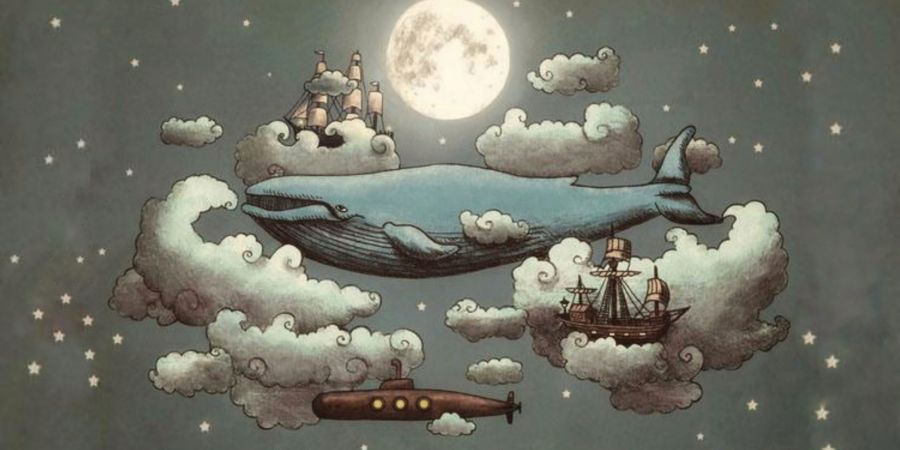

Dreams are often most profound when they seem the most crazy
-Sigmund Freud
We all have this experience of waking up from a dream and wondering how strange it is. But there is a reason why they appear weird and bizarre, and this process is known as the dream work. The dream work or the theory of dream formation is a very interesting and fascinating process proposed by Sigmund Freud in his groundbreaking work Interpretation of Dreams. So how does a dream originate? Let's find out.
I guess you all are aware of the fact that our unconscious mind is a place where all our repressed desires and unfulfilled wishes dwell. Within the unconscious, the ‘id’ or our baser and instinctive components of personality and the ’superego' or the ethical component of the personality which incorporates values and morals of the society are in constant conflict. So the conscious part of our mind called the ‘ego’ steps in and mediate between the two, thereby helping us in taking decisions. But in this conflict between the unrealistic id and the idealistic superego, some of the desires and wishes are repressed, which are unlikely to happen in the realm of reality. Freud contends that our dreams originate from these repressed wishes and desires in the unconscious. Freud therefore believes that, understanding the process of dream formation is a gateway to the working of our unconscious mind.

What we see as a dream is not just random things brought together. Freud identifies four aspects of the dream work which ultimately creates what we call a dream. They are condensation, displacement, figurability, and secondary revision. Have you wondered where does the things we see go after they disappear from our sight? Even the things that come infront of your eyes without you even noticing them are registered in your unconscious mind. So when a dream happen, all the things you see in a dream are not just random things, rather the unconscious perfectly crafts a narrative, skillfully dovetails images, stories, wishes and desires from the deepest corners of your mind. But this is a process that involves too much distortions and deception. And that's what happen in each of the stages of dream formation mentioned above.
Freud considers dream-displacement and dream-condensation as two foremen in charge of the dream work, ingeniously shaping our dreams. Different ideas and wishes are condensed into a single idea or a picture in the condensation process. According to Freud, “To the dream, ‘No’ does not seem to exist. In particular, it prefers to draw opposites together into a unity or to represent them as one”. So a single figure we see in a dream is a collective image and it could be contradictory elements fused together as one. During displacement phase, the wishes in the unconscious may be displaced to less significant or similar ideas. For instance, an original idea in the form of a word will be replaced by similar sounding words. The original idea will be connected by the most external and remote relations in this phase. Therefore, displacement is responsible for much of the bizarreness of the dream.

In the next phase of the dream work, wishes and ideas are transformed into concrete visual images. This stage is called functionability because they comprise the essence of the formation of dreams by translating the condensed and displaced ideas into the dream's vocabulary. By this stage, discrete visual elements are yoked together with the rules of narrativity. And finally through the process of secondary revision, a more or less coherent and presentable product with all the distortions and incoherence is created. And voila! We have a dream!
What we see as a dream goes through all these stages of the dream work. And this is the reason why dreams appear so strange and weird. Because what we see is a manifestation of our unconscious mind under a veil of disguise. Our repressed desires and wishes get a chance of expression, but that is done by deception, i.e, through condensing, displacing and distorting the original idea or ideas. So the next time you have a dream, try to analyse it, understand what could be its real meaning. May be you will gain some interesting insights about the working of your unconscious mind.


















